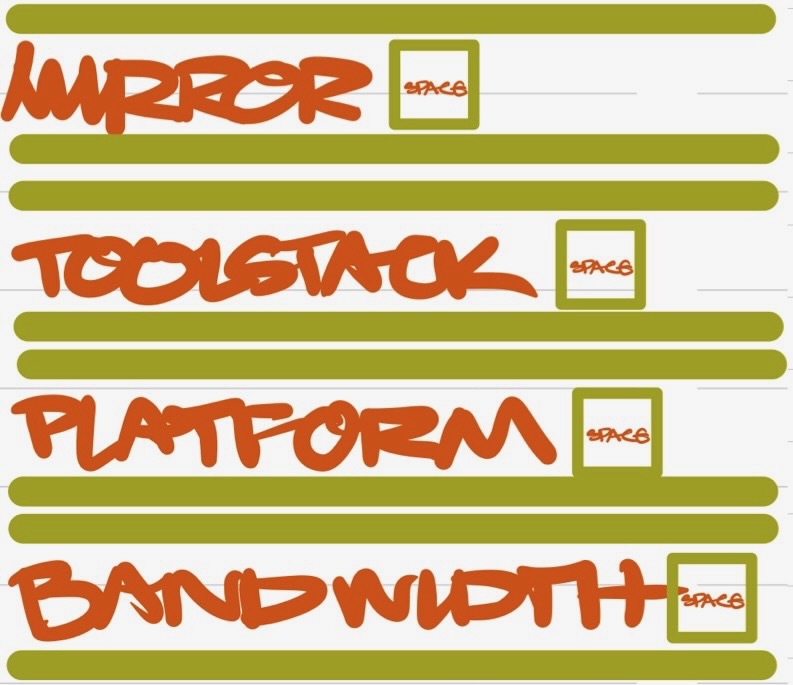Here we describe the tech layers of the full stack. We refer to them collectively as 'the tech band' of the real full stack.

The tech layers of the stack
Our starting place here is what in meet.coop was called 'platform space'.
# Platform layer Platform layer - A **commons of running code**, stretching all the way from the FLOSS repo of source code, thro the admins' stack(s) behind the scenes in the coop, and into the browser running on the user's device, via the international and local networks; and all the associated **practices**, at all points, including what is called UX, 'user experience' or usability. This is a pretty complex field to take responsibility for and, in itself, a real tech challenge. Platform layer
# Toolstack layer The toolstack layer is a **commons of digital tools** (or maybe we should say protocols of tool-use) within a community, as an intrinsic part of what *constitutes* the dynmics and relationships and capabilities of **practices** in the community. Toolstack layer
# Bandwidth layer The bandwidth layer is a commons of **signal transmission and processing**: cables and satellite capacity, wayleaves and base stations, data centres and routers, switches and ISPs, regulations and contracts; and all the associated **practices** and alliances. Bandwidth layer
# Mirror layer The mirror layer is a commons of **data**: pooling and aggregation and distribution of data, and **pattern recognition machinery**, and trained responses to 'conversational' queries. These configurations can mirror the activity and shape of a community to itself, beyond the scope of peer-to-peer relationship; or conversely 'steal' such insights and extract them for others to exploit. Mirror layer
# Fundability Project proposals in the tech layers will be less fundable if they have no coherent and well developed dimensions in the social layers or the planet layers. The social layers The planet layers
But of course there is no tech layer without many social practices of provision, operation, maintenance and use, and no commons without practices of stewarding and defence. Equally there is no digital tech without planetary consequences. So in principle it's not hard to imagine well-framed tech-layer proposals that embrace other layers.
Of course what 'the full stack' maps is an ecosystemic reality. Full stack, ecosystem map
Project proposals in the bandwidth layer might be more difficult to frame as viable initiatives - they are the 'heaviest' in material terms and most localised in material scope - and might thus be more erasy to fund when they *are* well framed. This would be a good example of the peer-to-peer principle: 'heavier is more local, lighter is more global'.